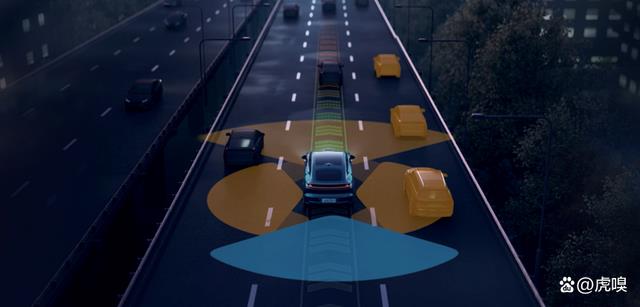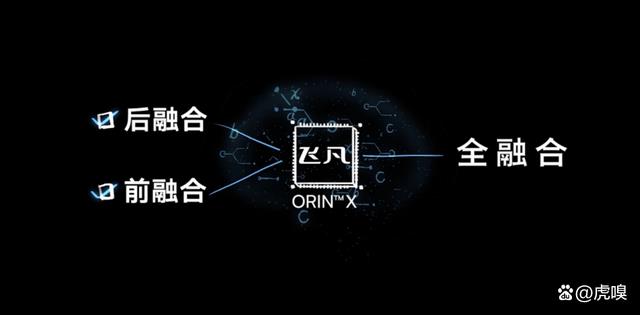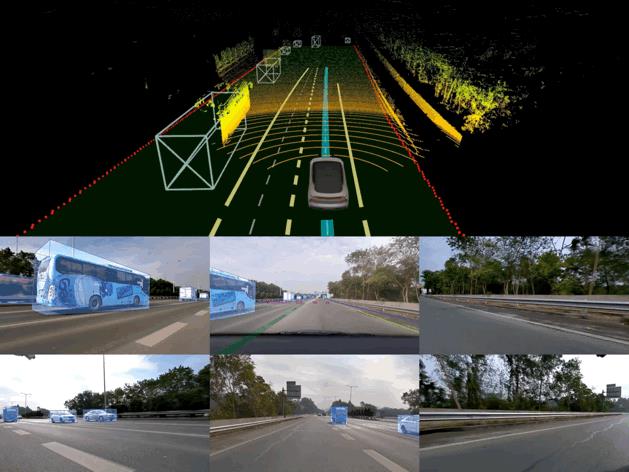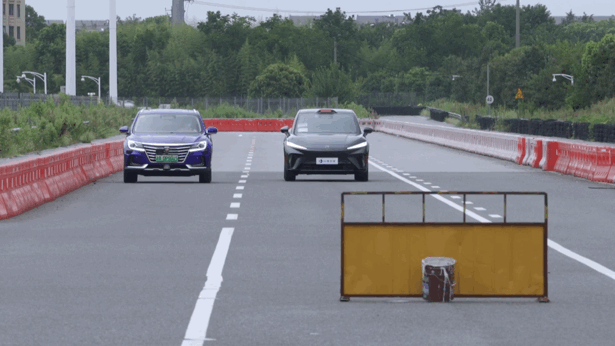
China people’s car preference has changed.
In 2021, a research report on China’s new car purchase intention released by the market research institute J.D. Power showed that nearly a quarter of the people who had the intention to buy a car within six months took intelligent experience as the most important decision-making factor.
Among the seven factors that affect car purchase decision, intelligent car experience accounts for 14% of the weight, and 24% of prospective car buyers think that intelligent car experience is their most important car purchase consideration. At the same time, the lack of new technology has become the third biggest concern of potential customers.
This year, this report reveals a new trend: compared with other age groups, the post-95 s pay more attention to intelligence when buying a car.
The two reports released a clear signal,Nowadays, the concept of car purchase of China consumers is six words: no intelligence, no money.
What exactly is a "smart" car? Simply put, internally, the cockpit should be advanced enough; Externally, you should be smart enough to drive.
Under the guidance of the banner of changing car buying preferences, computing power has become new horsepower and intelligence has become new performance.The ability of a car’s intelligent driving system has become the most important business card of this car company in the new automobile era.
So, what should a "good" intelligent driving system look like?
In the early days, before the algorithm was mature, it was compared with the ability to pile up hardware: lidar, large computing chip, high-pixel camera, and other high-standard hardware. When evaluating the intelligent driving system, consumers mostly focus on the number of hardware.
A relatively backward cognition of intelligent driving is: hardware cow = good experience.
There is nothing wrong with this idea. After all, the hardware determines the lower limit of the capability of a smart driving system.
However, with the rapid popularization of smart electric vehicles in China, consumers in China have gradually realized that hardware can’t be exchanged for experience. Moreover, as long as these hardware are willing to pay, any car company can buy them from suppliers.
The real hero behind a safe, stable and comprehensive intelligent driving system is actually the master of metaphysics that users can’t see or touch: algorithm.
What is an algorithm? You can imagine that a symphony orchestra without a professional conductor, even if every position is filled with masters of musical instruments, can only piece together a chaotic performance with different tunes and no rules.
The algorithm is this "professional conductor".Only by using algorithms to "light up" the hardware such as lidar, chip and camera can they maximize their efficiency in a set of intelligent driving system.
He who gets the algorithm wins the world.
As we all know, the complete process of autonomous driving is: perception, decision-making and control.
Perception is that all kinds of sensors work continuously to collect the information of the vehicle itself and the outside; Decision-making is the vehicle computing unit, which analyzes the information obtained by the sensor according to the existing algorithm and makes a decision suitable for the current situation; Control is based on the decision-making plan, instead of the driver, to control the acceleration, braking, steering range, lighting and other driving actions of the vehicle.
Perception system is equal to the driver’s eyes, decision system is equal to the driver’s brain, and control system is equal to the driver’s hands and feet.
Algorithm is the decisive factor of the intelligence of the "brain" of the decision-making system: the basis of automatic driving is the large-scale deployment of the algorithm. From the feature extraction of the sensing link to the decision-making of the neural network, it is necessary to rely on the improvement of the algorithm to improve the accuracy of obstacle detection and the decision-making ability in complex scenes.
Autopilot domain algorithms are generally divided into three types: perception algorithm, fusion algorithm and execution algorithm.
Perception algorithm is to transform sensor data into machine language of vehicle scene, such as object detection, recognition and tracking, 3D environment modeling, object motion estimation and so on.
The fusion algorithm is to process the data of different dimensions, such as images or point clouds, obtained by different sensors in a unified way, so as to provide decision-making basis for the vehicle computing unit.
Among them, the fusion algorithm is divided into two paths: pre-fusion and post-fusion.
To put it simply, the pre-fusion algorithm is to make fresh dishes and fry all kinds of ingredients (raw data) before serving; The post-fusion algorithm is to pre-prepare dishes, and heat them before serving them (raw data).
Both algorithms have advantages and disadvantages.
Pre-fusion requires higher hardware computing power because different types of data sources have to be processed at the same time. Moreover, the neural network has a very low probability of misjudgment, and another redundant system is needed for verification. This complex, sophisticated and evolving AI algorithm can’t be imported, which puts forward new standards for the self-research ability of car companies.
Post-fusion is limited by the upper limit of the ability of a single type of sensor, which leads to occasional missed detection or false detection under certain conditions. For example, radar can easily determine the distance and position, but it is not good at judging color and texture, and it can’t recognize text information. Cross-validation of multiple types of sensors is needed to ensure the effective intelligent driving function under different environmental conditions.
Is it possible to really "fuse" the pre-and post-fusion algorithms, use their strengths and avoid their weaknesses?
The answer is: of course.
Full fusion algorithm(Full Fusion) came into being under this technical background. Internationally, Mercedes-Benz and Volvo, two major manufacturers, have announced the entry of fully integrated algorithms to attack high-level intelligent driving along this route, but there is still a long way to go before they can be delivered. In China, Feifan Automobile, a new vehicle-making force backed by SAIC, has taken the lead, not only becoming the first automobile brand in the industry to launch a fully integrated algorithm, but also taking the lead in mass production and delivery on Feifan R7 delivered in late October this year, with its RISING PILOT fully integrating the high-speed pilot function of high-order intelligent driving system.
Theoretically, the "total fusion" refers to the comprehensive comparison of the detection results output by pre-fusion combination, multi-task, multi-feature network and deep neural network with the detection results independently output by post-fusion multiple sensors, so as to realize hybrid fusion, and relying on the safe and redundant deployment of high-bandwidth and supercomputing chip platform, a whole set of actions such as perception, fusion, prediction, decision-making and execution can be completed within milliseconds through triple fusion.

It is easier to understand that the user ordered a "dish" called Zhijia and sent it to the front. The kitchen has both prepared dishes and prefabricated dishes. The chef will select and blend the dishes according to the actual situation, and the ultimate goal is to let the users get a meal experience with good color and flavor.
According to public information, Feifan Automobile is a data-driven automobile technology company established in November 2021 and relying on user orientation. Feifan R7 is the first model of Feifan automobile after independence.
Seeing this, you may have a question. Less than a year after independent operation, how can Feifan Automobile hand over the more advanced intelligent driving system than overseas car companies? Does this system rely on piling up conceptual terms to fool people’s futures, or is it a down-to-earth and reliable spot?
No matter how much you say, it is not as convincing as the actual measurement.
According to the comprehensive measurement of domestic media in specific scenes such as ramp and lane change, the RISING PILOT on Feifan R7 has performed well in both the success rate and stability, which is the result of more than 900 day and night battles of Feifan Auto’s 500-person self-developed team.The advantages are relatively obvious in the identification of many intelligent driving scenes, which are generally regarded as difficulties in the industry.Among them, I was deeply impressed by three points:
The first scene is the accurate identification of ramp, especially the triangle area of multi-fork ramp.

Compared with the unstable performance of the existing intelligent driving system in the market for ramp identification, RISING PILOT can identify the triangle area of the ramp in advance in a farther place, reserve more lane space and action execution time for lane change, and avoid the thrilling scenes such as recognition failure, handing over control rights, or sharply slowing down from the fast lane and merging into the low-speed ramp in a short time.
The second is the recognition and perception of static roadblocks.

In the past year, there have been many collisions of intelligent electric vehicles at home and abroad because they can’t identify the static roadblocks in the construction area. In fact, this scene has always been the capacity vacuum zone of the existing intelligent driving system. Under the action of 4D imaging radar, RISING PILOT can detect the construction area as far as 500 meters in advance, accurately identify static obstacles, even if only ice cream cones or construction signs can be accurately identified in advance, and realize early avoidance through full fusion algorithm and rapid response.
The third is to take the initiative to change lanes and overtake.
The general intelligent driving system often fails to identify and avoid in advance when the front car changes lanes and draws dragons or the large car in front of the side suddenly appears. Only when the distance between the two cars is close enough, the system will intervene in the work, or give an early warning, or suddenly avoid, and a slight shift of attention will lead to rubbing and scratching, which has certain security risks.

The practice of RISING PILOT is to monitor the real-time speed difference while sensing the road 360 degrees without dead angle. When encountering a conflict scene, put safety first, and adopt a seemingly "conservative" execution strategy at the first time, that is, keep a safe distance from the surrounding vehicles, let the conflicting vehicles go first, and then complete the follow-up actions such as changing lanes. Logically speaking, the strategic thinking is closer to the experience of human drivers-avoiding risks without making risks.
Of course, even if RISING PILOT behaves like this, it can’t satisfy all users’ tastes. Therefore, Feifan Auto specially added the self-adjustable MY PILOT to support users to switch between various driving modes such as comfort, standard and sports. Different modes have obvious differences in lane change strategies and driving styles to cope with the same traffic conditions, so as to adapt to the individual demands of different users and different road conditions.
From the media measurements, you will find that,RISING PILOT ran very happily and smoothly on the road in China. The reason is very simple. RISING PILOT is fed by Feifan automobile with the actual running data of China road, one kilometer at a time.Before delivery, the measured mileage of RISING PILOT on China Expressway totaled more than 170,000 kilometers, and the overall test mileage exceeded 400,000 kilometers, which was much more than the total mileage driven by many users before changing trains.

Hardware, can’t fall behind.
It is not enough to embed the basic hardware in order to get a certain leading position in the very "rolling" China automobile intelligent driving track. Only by embedding the hardware ahead of the times like Feifan Automobile and providing the foundation for the higher-order algorithm to play its role, can we seize the first-Mover advantage window and firmly lay our own anchor point in the fast-moving industry iteration tide.
Speaking of advanced hardware, "Wei Xiaoli" always seems to be able to grab all kinds of world firsts, such as NVIDIA Orin X autopilot chip and Innovusion 1550nm lidar. Yes, as a new force to build cars, these three companies did occupy the first time window of many smart driving hardware, but this does not mean that only these three companies are busy putting advanced hardware into new cars. The efforts and positive momentum of Feifan Automobile are not worse than "Wei Xiaoli".

First of all, win in number.
Feifan R7 is equipped with 33 sensing hardware, the first domestic mass-produced Premium 4D imaging radar, enhanced long-range point cloud angle radar, 8-megapixel camera and centimeter-level high-precision positioning system.
Secondly, the quality is superior.
For example, the 4D imaging radar, the top sensor that can identify coke cans 140 meters away, was first used in China on Feifan R7.
Premium 4D imaging radar can sense data in four latitudes: distance, speed, horizontal azimuth and vertical height, and adds "detecting the vertical height of objects" on the basis of 3D radar. Compared with millimeter-wave radar, 4D radar improves the detection rate of static obstacles by increasing the number of transmitting and receiving channels, providing point cloud function and outputting four indicators of X, Y, H and V (distance, horizontal and vertical positioning height and speed). At the same time, the detection distance of Premium 4D imaging radar is 350 meters, which is higher than 210 meters of ordinary millimeter wave radar, and it can operate normally in extreme weather and poor lighting conditions.
Twelve 8-megapixel cameras can perceive the whole range around the vehicle in 360 degrees, and the perception content of dynamic traffic participants, static lane lines, ground signs, traffic lights, speed limit signs and other traffic elements is more granular. Moreover, the 8-megapixel camera can achieve a higher dynamic range (HDR) and a stronger LED strobe elimination function (LFM).
In the end, I won in calculation.
Feifan R7 is equipped with NVIDIA Orin X chip, and the computing power of a single chip is 254TOPS, which meets the computing power requirements of the existing platform, and lays a solid foundation for data iteration and algorithm iteration to achieve a higher level of assisted driving.
Undoubtedly, it is not enough to embed the basic hardware. Only by embedding the hardware that is ahead of the times, like Feifan Automobile, can we seize the first-Mover advantage window and firmly lay our own anchor point in the rapid progress of industry iteration.
Write it at the end
The final battle of driving assistance ability is essentially a comprehensive competition of hard and soft. On the premise of the same hardware level, the key to winning is the software level. The algorithm level of software is the core of the solution to realize functional differences. On RISING PILOT, you will see that Feifan Automobile has put the "fully integrated" algorithm route on the stage.
Faster than international manufacturers, because Feifan Automobile has done three things right: First, it will start research and development in the field of intelligent driving in 2020, which is very close to the route of "Wei Xiaoli" turning to self-research, which is consistent with the rhythm of the industry head; Second, a 500-person high-level intelligent driving talent pool was established, and at the same time, project teams were deployed in several cities in China to carry out research and development and improvement centering on the localization scenes and needs of China users; Third, it is deeply bound with the top suppliers in the world such as LUMINAR, NVIDIA and ZF, and presses the acceleration button for the whole process based on the full value chain integration and mass production experience of SAIC.
But why wait until this year? Because Feifan Automobile, as a mature car-making company, doesn’t want to deliver "semi-finished products" to users, so it chooses to use time and a lot of road tests to precipitate data and correct products. The final result is that Feifan Automobile has made a RISING PILOT with its own style. As Wu Bing, CEO of Feifan Automobile, said at Chengdu Auto Show, "Be a big shot, not a big mouth".
China consumers will buy this RISING PILOT system, which was born and raised in Sri Lanka. We can’t give a definite answer before delivery, but what we can be sure of now is that,The "algorithm school" represented by Feifan Automobile is striding towards the center of the stage of the era of intelligent electric vehicles.
Reporting/feedback